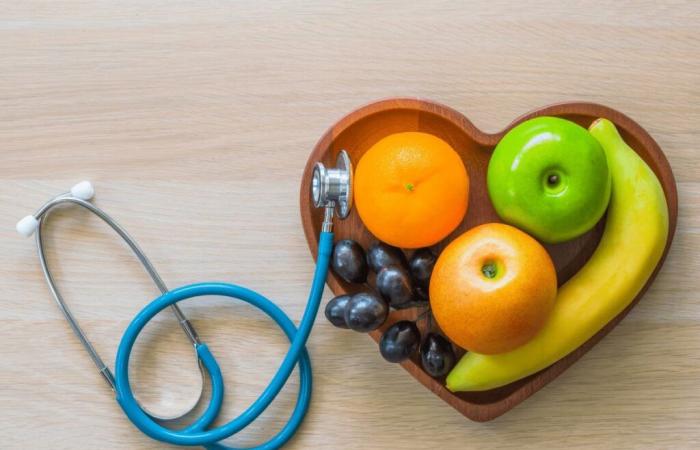Often perceived as an enemy, cholesterol nevertheless plays a vital role in our body. It contributes to the production of cell membranes, hormones (such as sex hormones), vitamin D, and bile acids necessary for digestion. However, there are two types of cholesterol:
– HDL (or “good cholesterol”), which transports excess cholesterol from cells to the liver to be eliminated. It thus protects our arteries.
– LDL (or “bad cholesterol”), which deposits cholesterol on the walls of the arteries, increasing the risk of cardiovascular disease.
Processed products: hidden enemies for your LDL cholesterol
In our kitchens and cupboards, many processed products can increase LDL cholesterol. Although they are convenient and often perceived as harmless, these foods often contain saturated fats, trans fats or processed ingredients that can negatively impact cardiovascular health. Here are the main culprits:
Stock cubes and industrial cooking aids, dehydrated sauces… often contain hydrogenated fats or poor quality oils, rich in trans fats. The latter, although used in small quantities, easily accumulate in the daily diet, contributing to increased LDL and arterial inflammation.
Margarines, although some are reformulated (click ici ,) many remain high in trans fats or hydrogenated oils. These products are often used in homemade or industrial pastries, but also in ready-to-use products.
Rusks, biscuits, cakes and pastries frequently contain saturated fats and partially hydrogenated oils. These fats, combined with fast sugars, promote not only a rise in LDL but also an increased risk of inflammation and oxidation.
Cold meats (sausages, pâtés, industrial hams) and breaded meats contain not only saturated fats, but also additives that increase markers of inflammation and worsen the risks linked to oxidized LDL.
Mayonnaise, ketchup, salad or industrial pasta sauces are often rich in saturated fats and hydrogenated oils. Their frequent consumption can significantly increase the lipid profile.
Dessert creams, flavored yogurts or industrial mousses are often enriched with saturated fats, although they are not always easy to spot on the label. These products, although perceived as “pleasure” snacks, can have a negative impact when consumed regularly
Chips, crackers and other salty snacks are often fried in low-quality oils that are high in saturated or trans fatty acids.
Lasagna, quiches, packaged or canned soups, and industrial pizzas often contain saturated fats from low-quality cheeses, processed meats, or cream-rich sauces. To this is often added a high salt content, aggravating cardiovascular risks.
Limit the impact of bad cholesterol
To limit the impact of these products on your cardiovascular health, it is essential to learn to read food labels. Here are some things to look out for:
– The terms “hydrogenated fats” or “partially hydrogenated”
– A high amount of saturated fats (above 10-15 g per 100 g) in the nutritional table is a risk indicator.
– Hidden sugar: Look for mentions like glucose syrup, fructose or sucrose, which increase triglycerides.
LDL itself is not a problem when it circulates normally in the blood. It is when it is oxidized by oxidative stress (caused by tobacco, pollution, or a diet rich in ultra-processed products), it becomes particularly harmful. Limit ultra-processed products (click ici ) and favoring foods rich in antioxidants (fruits, vegetables, quality oils) is therefore crucial to reduce not only the LDL level, but also its oxidation. Do not hesitate to be accompanied by a dietician (click here). This will prescribe advice adapted to your case, but also to your preferences and eating habits!
Recipe of the week: Leek, salmon, candied lemon and flax seeds quiche
For 4 people preparation – 25 min – cooking 35 min
For the dough: 200 g of T 80 wheat flour or wheat and spelled mixture (click ici) – 50 g of olive oil – +/- 50 g of water – 2 tbsp. level tablespoons of flax seeds – salt.
For the filling: 20 cl of milk – 4 eggs (organic or blue/white/heart) -4 leeks – 2 steaks of salmon cooked without the skin – 1 red onion – 1 tsp of dill – 1 tbsp. tablespoons of candied lemon puree (optional) -2 tablespoons of olive oil- salt pepper.
Prepare the dough. Crush the flax seeds with a pestle. Mix the flour and oil and salt with your fingertips. Add the flax seeds. Knead until you obtain a soft dough, pouring in the water as you go. Cover the dough and let it rest in the fridge for at least 1 hour.
Peel and cut the leeks and onion into 2 cm slices, rinse them. Brown them over low heat for about 15 minutes, in a pan, with a little oil, the preserved lemon and the dill, mix and continue cooking, covering them halfway through cooking: they should be soft.
Preheat the oven to 180°C. Crumble the salmon. Whisk the eggs and mix in the milk and chopped dill. Salt and pepper.
Roll out the dough, line it with a buttered tart pan, prick it with the tines of a fork and brush it with the mustard. Distribute the leek slices and the salmon and pour in the milk mixture. Bake for 25 min. Serve hot.
But also: Poached pears, yogurt ice cream – click ici






